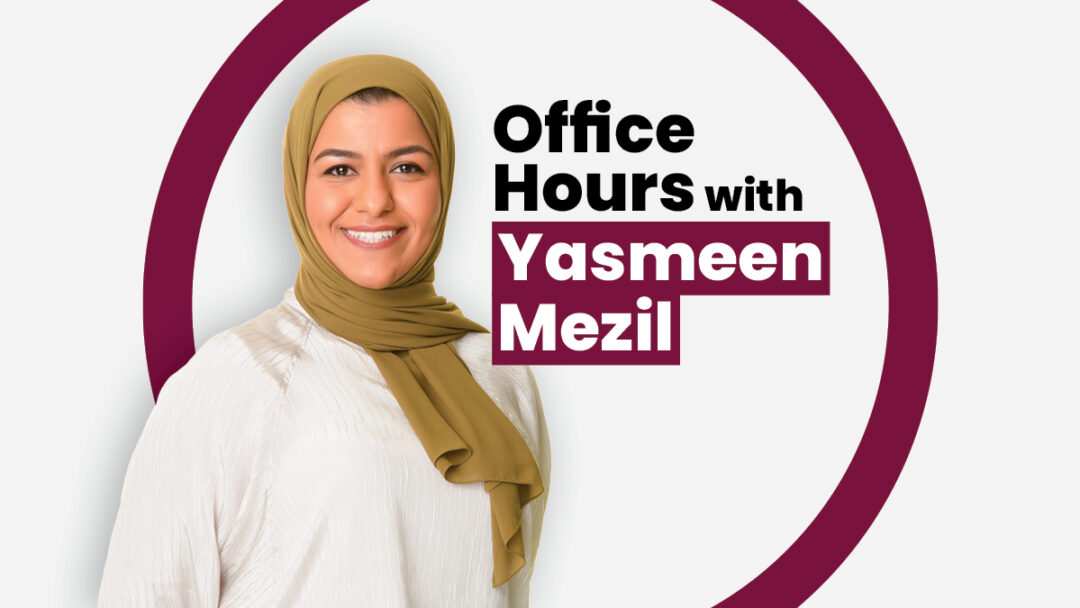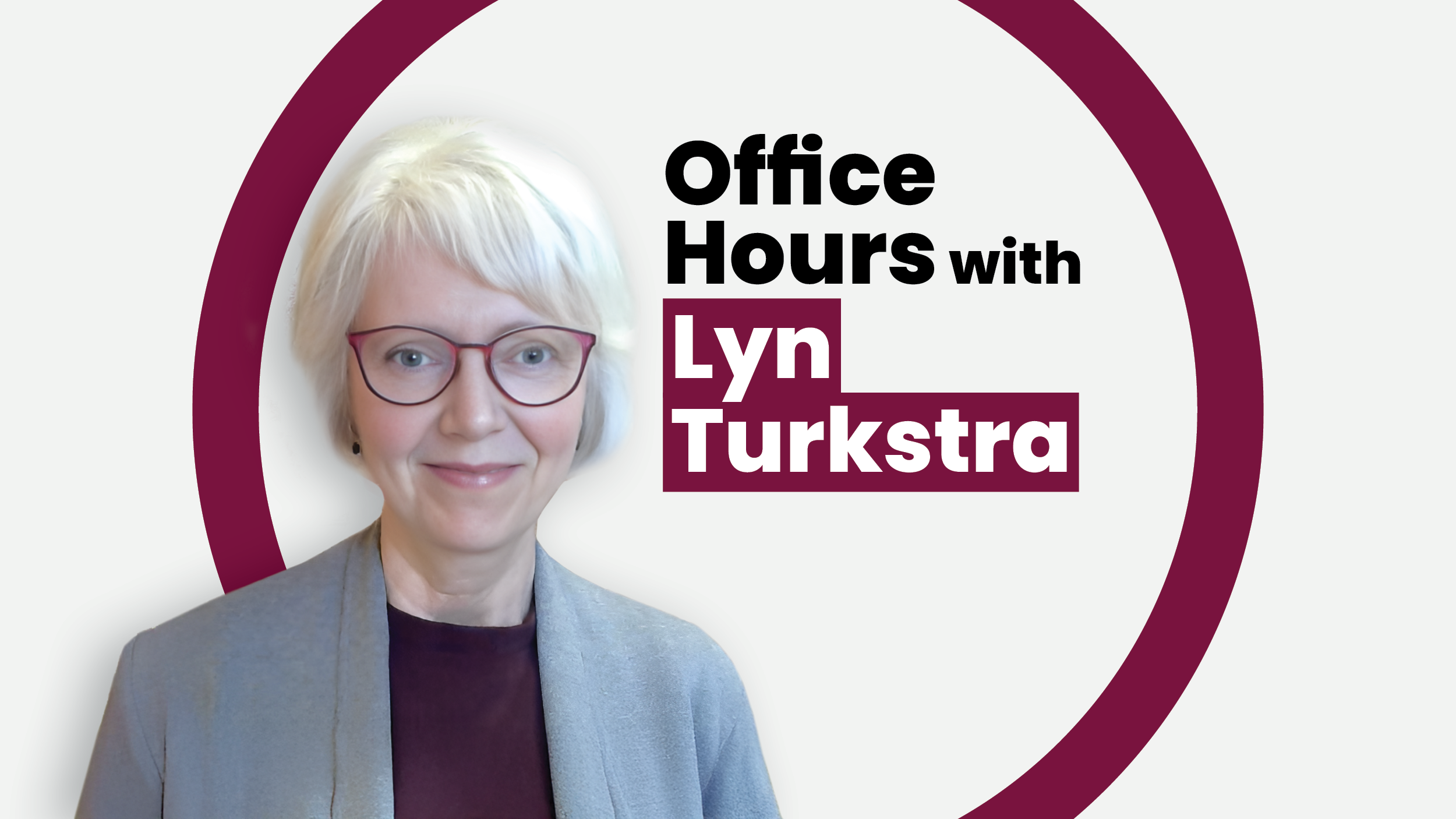Office Hours with Yasmeen Mezil

From Leonardo da Vinci to Mansur Ibn Ilyas, the human body has long been an inspiration for artists. But can art play a role in the learning of medical students? According to Yasmeen Mezil, there’s an opportunity to bring out the best in our future healthcare providers through art.
Mezil, an assistant professor in the Department of Pathology & Molecular Medicine, primarily teaches anatomy at the Michael G. DeGroote School of Medicine and uses her passion for drawing to inspire medical students to learn in new ways.
No bones about it
Mezil, who was born in Kuwait, says her fascination with the human body, especially bone health, started at a young age while watching her dad manage ankylosing spondylitis, a condition that causes the vertebrae to fuse, resulting in joint stiffness and back pain.
“I think that exposure as a child inspired my interest. Even as I went through my undergraduate studies, whenever the bones were discussed, I was immediately interested because of that backstory.”
Mezil pursued a PhD at McMaster in the Child Health & Exercise Medicine Program, where she explored exercise, bone health and muscle health. It was at McMaster where she learned, much to her surprise, that a career in academia might be a fit for her.
“I never saw myself teaching. I would learn things and I would enjoy making them make sense to me in different and creative ways, but I don’t think I saw the connection to me teaching others,” she says.
“However, when I became a teaching assistant for my Masters and then my PhD, that exposure to sharing what I know with others and helping them succeed really changed my point of view. It felt immensely rewarding.”
The intersection of creativity and education
There was a path Mezil could have pursued that would have had her holding a sketchpad, not a scalpel.
“I’ve always loved art and my mom picked up on that quickly. She really helped me to foster that skill set and hobby by encouraging me to pursue it.”
Though Mezil pursued a degree in sciences and didn’t initially see a connection between art and science, over time she’s grown to appreciate art not just as a form of creative expression, but also as a way of learning. When she was a teaching assistant, she would prepare to teach students by drawing structures of the body.
“When we invest in our interests, even if they’re far from what we do professionally, we are expanding our expertise, because everything we do becomes transferable to what we do professionally in one way or another.”
Mezil now encourages her students to borrow her mapping process and sketch the human body as a way of learning.
“The first response I get from students is, ‘I’m not an artist. I can’t draw.’ I always stop them and remind them it’s not about esthetics, I’m not asking them to make a masterpiece. All I’m asking is they use drawing as a way of learning because that in and of itself can make a huge difference as opposed to, for example, buying premade flash cards.”
The intersection of creativity and education comes to life in Mezil’s research project “Draw, Design, Disseminate (D3),” a creative hub for the anatomy lab where students, staff, and faculty make anatomy more engaging through gamification – taking elements of games and applying them to teaching and learning. Students have created board games about the function of kidneys, 3D modeling games about the digestive system and card decks about different muscles and their actions.
Mezil also spearheads a cross-faculty collaboration by inviting McMaster Arts students to the anatomy lab. The initiative has provided both arts and health sciences students with an opportunity to learn more about anatomy and to creatively express the specimens they’re observing.
Gratitude is the best attitude
The levity of games and creative expression is a healthy, welcome balance to the somber realities of the anatomy lab, where Mezil teaches dissection to students. That heaviness comes from not just working with donors who have bequeathed their bodies for medical education, but also from the colonial history of anatomy education, says Mezil.
“Anatomy is a beautiful and complex discipline, however it does come with dark history. Much of what we know can be traced to unethical practices, such as experimentations without consent. Just because these practices generated knowledge, it does not make them acceptable. The way that we acquire knowledge is important.”
Mezil is dedicated to acknowledging and dismantling the colonial framework of anatomy education. Another example she offers is when knowledge is solely credited to a specific demographic of people. Academic literature has a dark history of whitewashing names of scholars, which can have negative impacts on students, she says.
“Having grown up in the Middle East, I am aware and I am also proud of the rich contributions that Middle Eastern scholars have made to anatomical knowledge. What breaks my heart is knowing that the literature not only discredits the pivotal findings of these scholars, but it also persists to use their Latinized names as opposed to their Middle Eastern names, thus stripping them away from their identity. For students who share these ethnic backgrounds, you can imagine how frustrating and excluding this can be.”
The anatomy lab can be complex and create difficult feelings for students, but Mezil says the biggest lesson she can teach her students is about having an attitude of gratitude for the privilege and opportunity they have.
“Instilling a sense of appreciation and gratitude goes a long way,” she says. “When you remind yourself how privileged you are to be able to work with individuals who their last gift of life was their bodies, and that you can learn from them and pass that gift to other students through the form of knowledge – it’s an immense blessing.”
“It’s not just about learning anatomy so that we can know all the muscles of the arm,” she says. “It’s about learning anatomy so that we appreciate the sanctity of human life and that we appreciate humanity as a whole. That’s what really drives me.”
Faculty & Staff, Office HoursRelated News
News Listing

2 days ago


